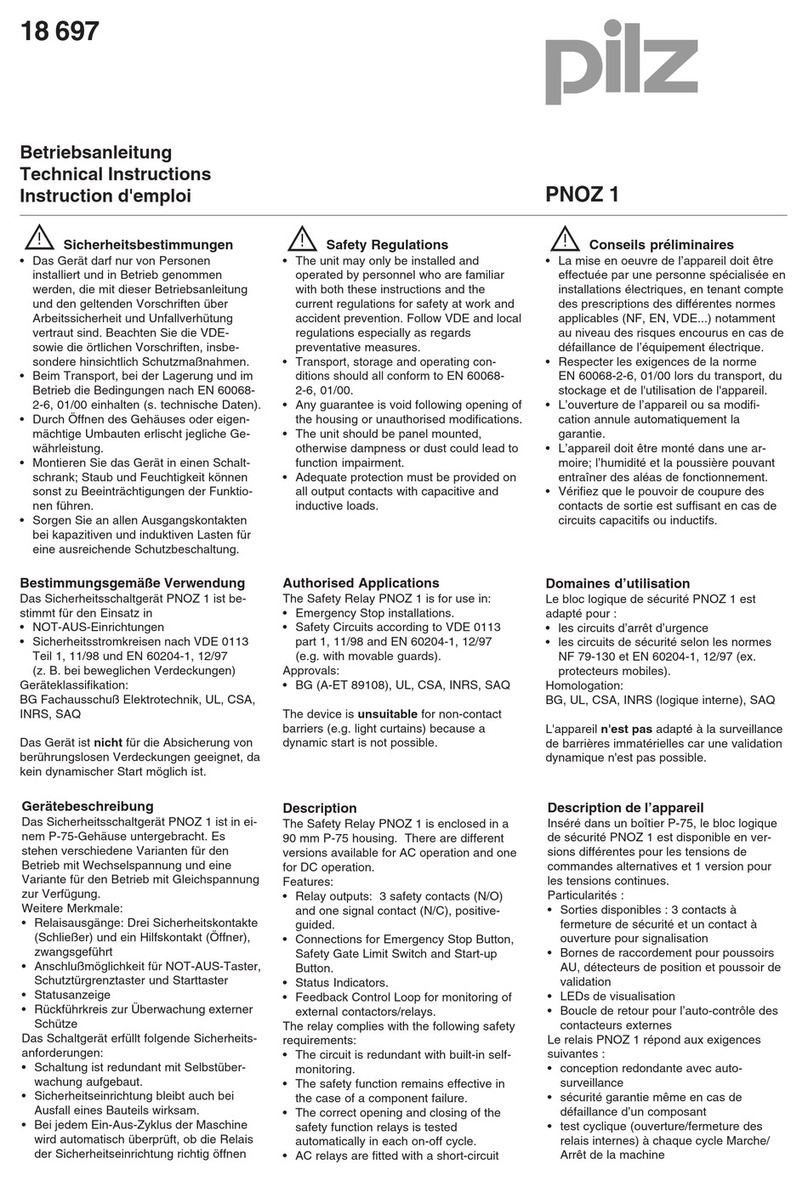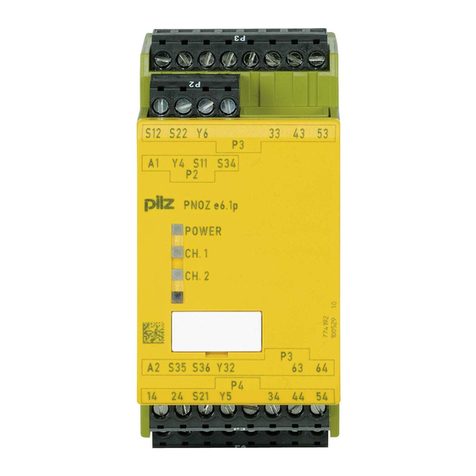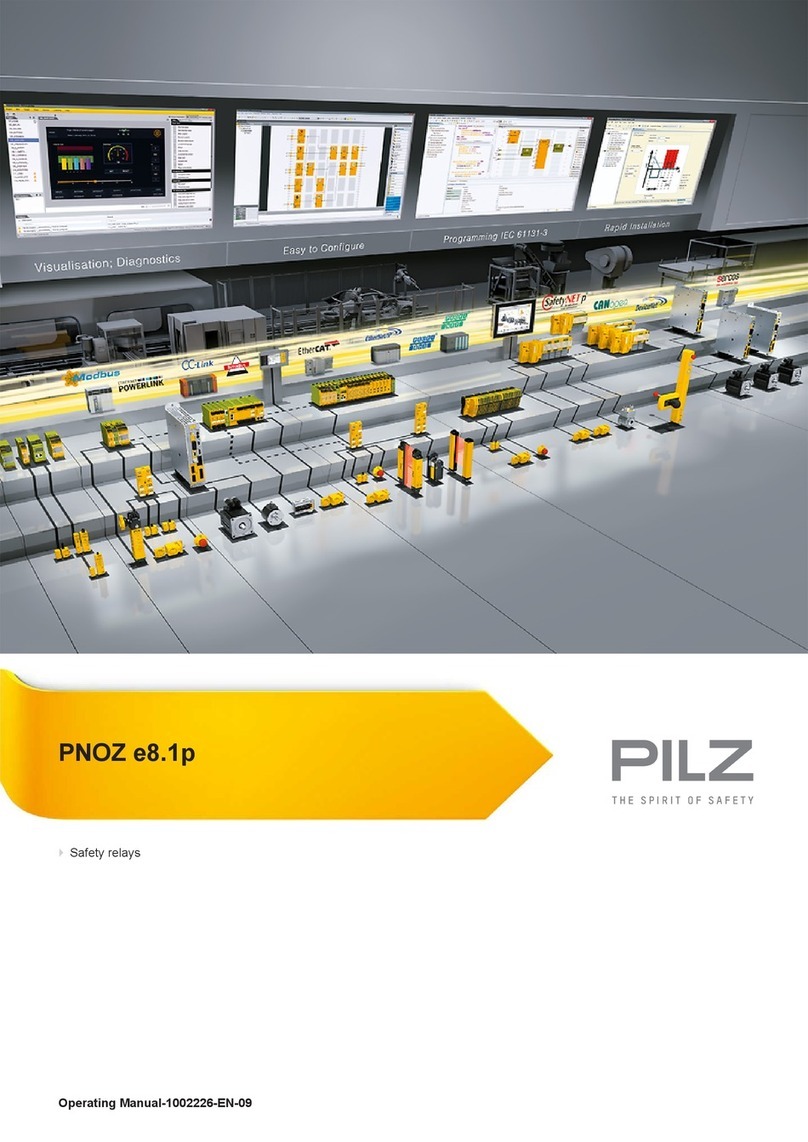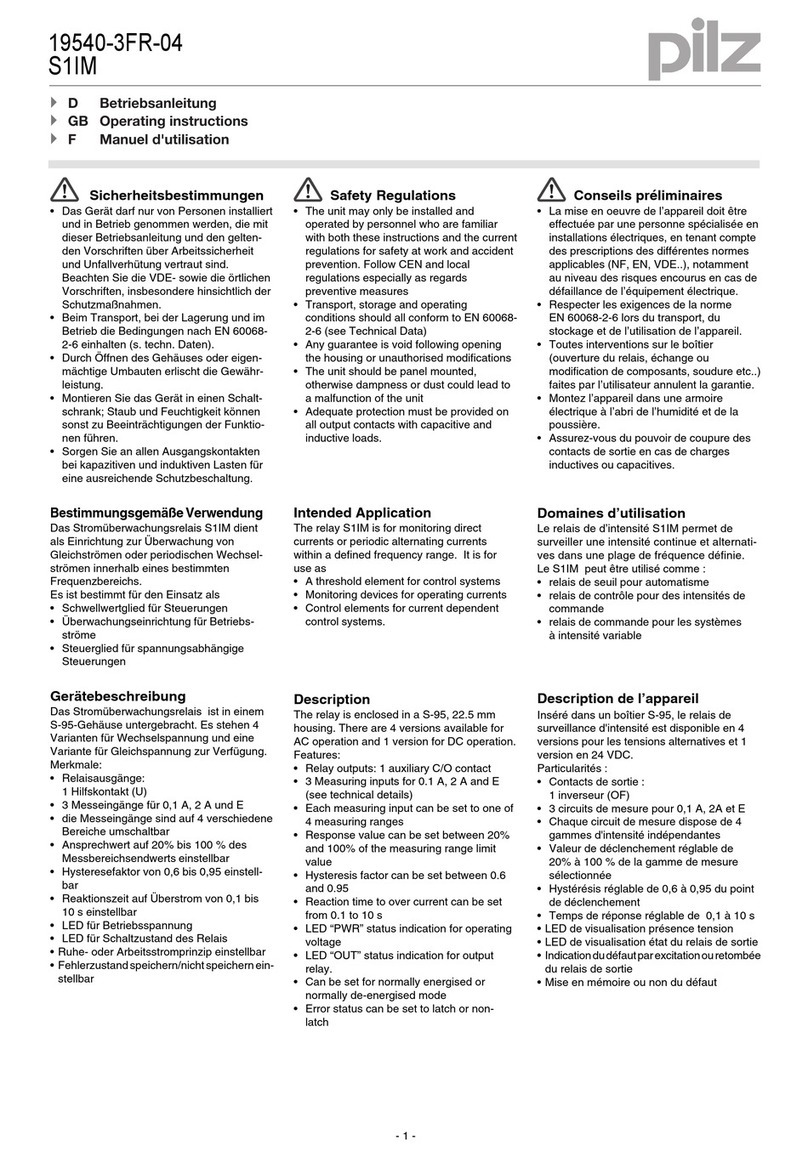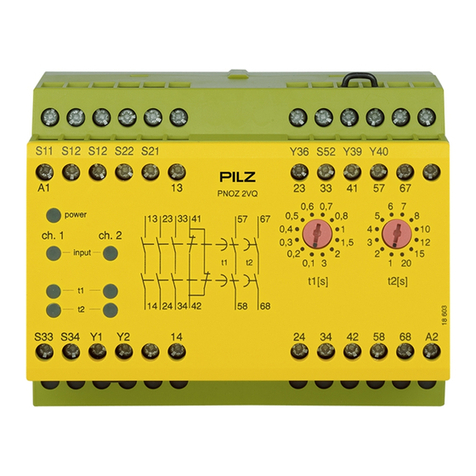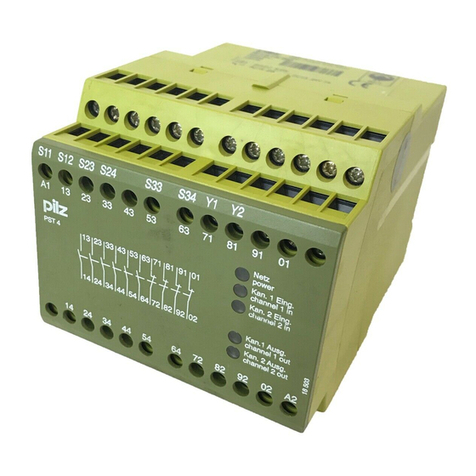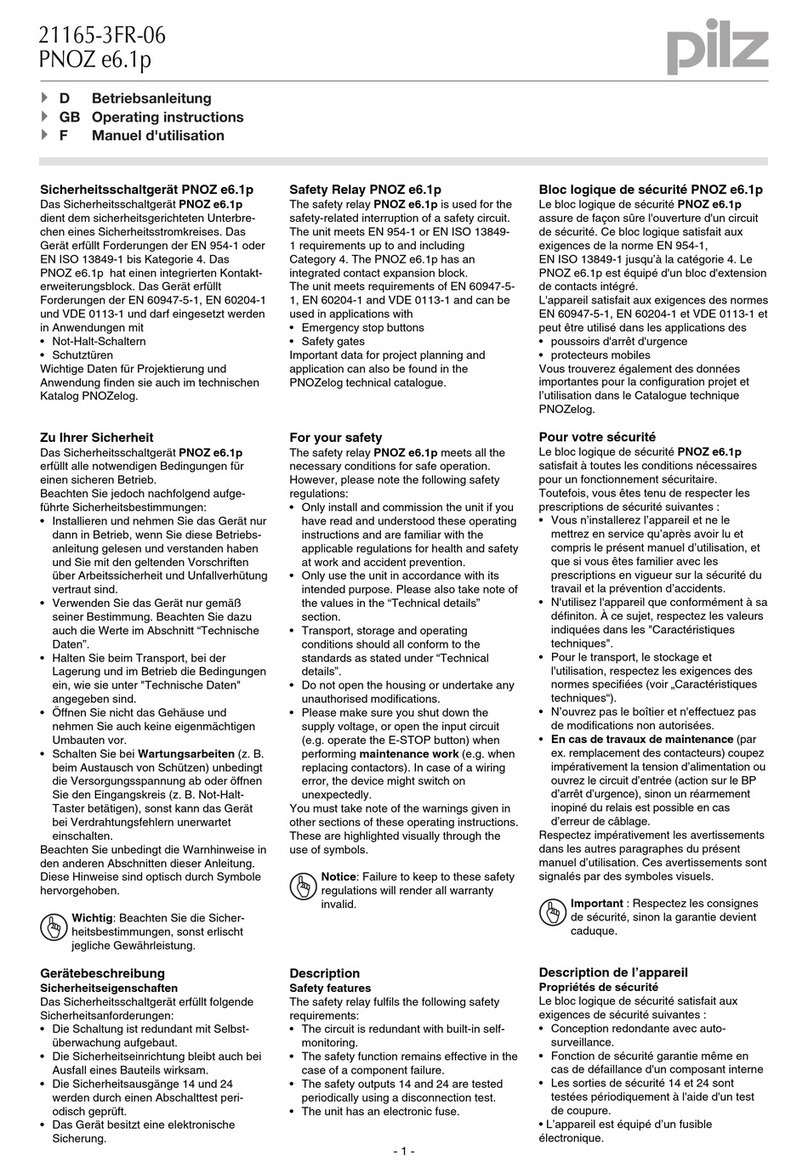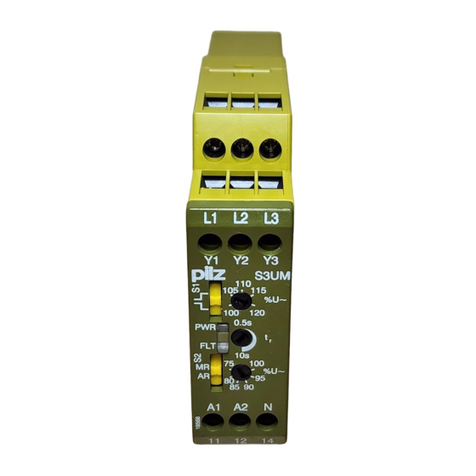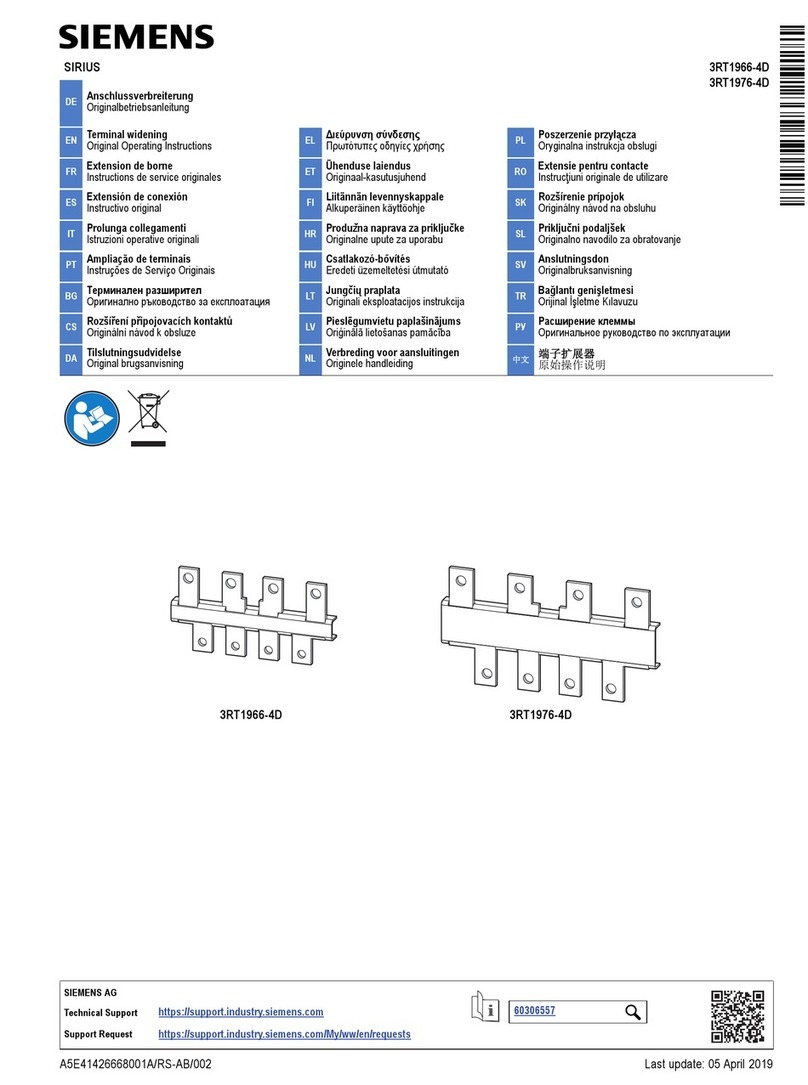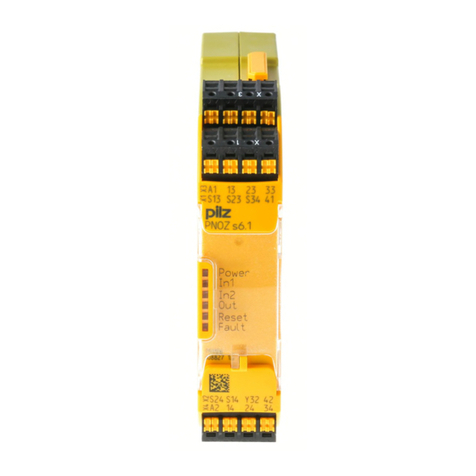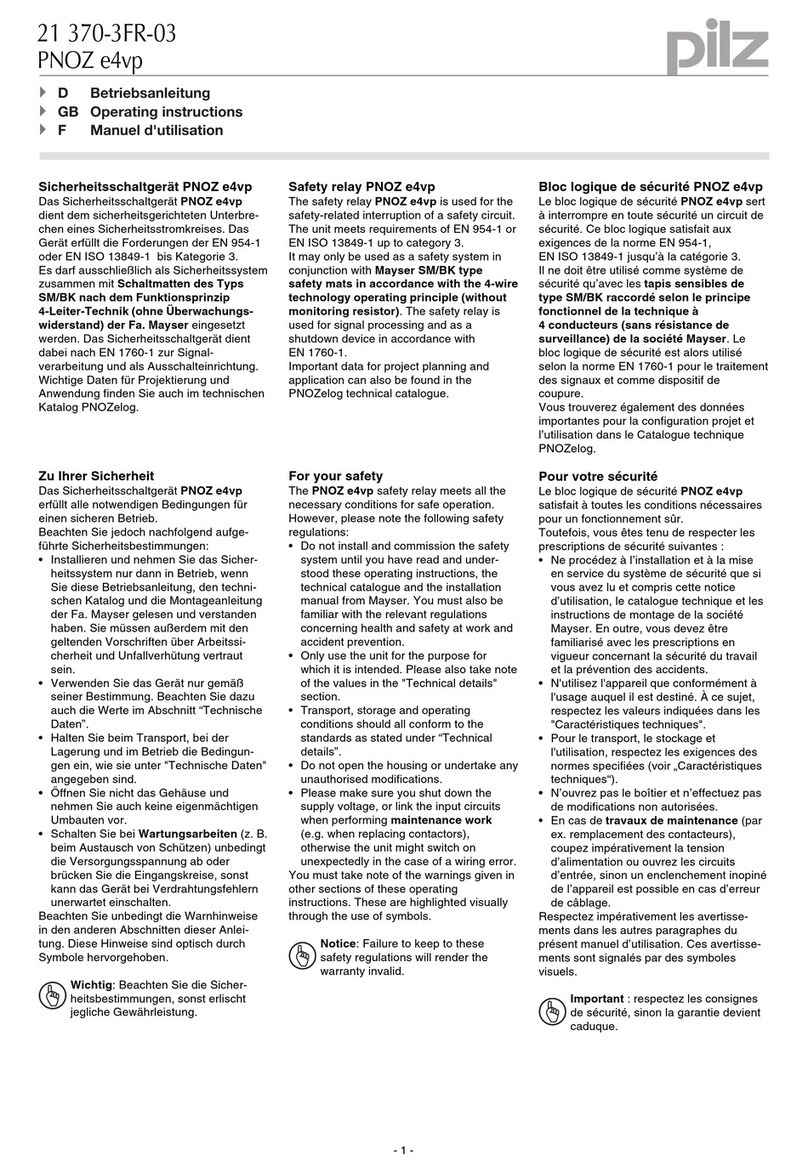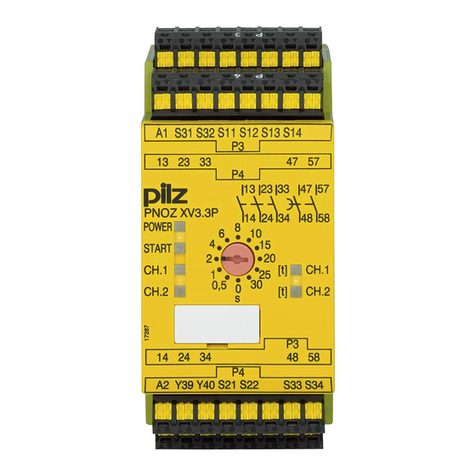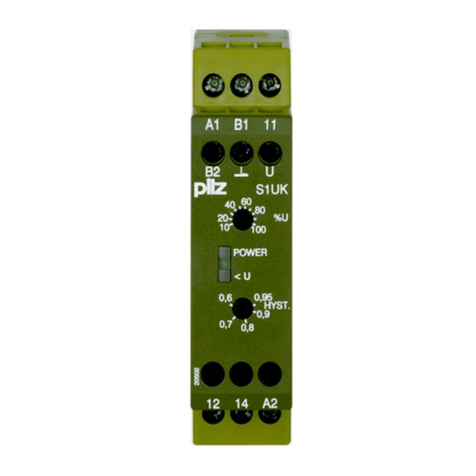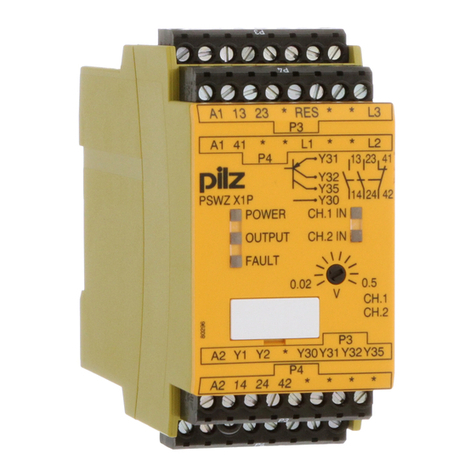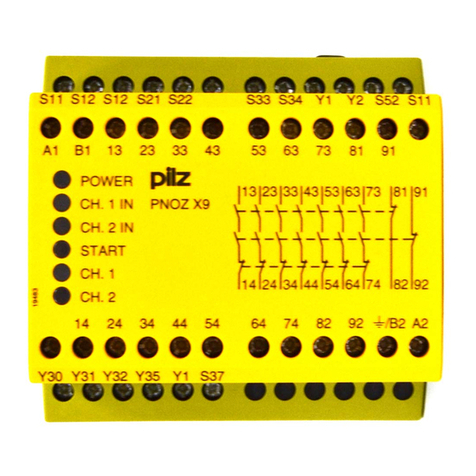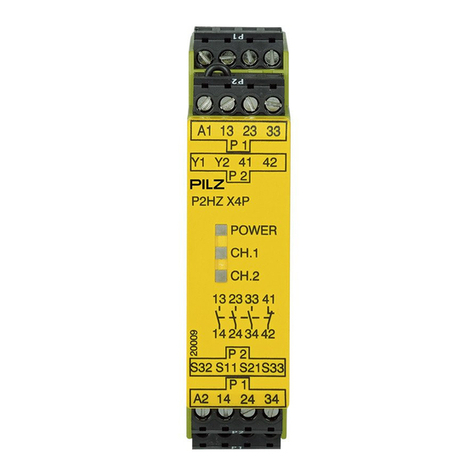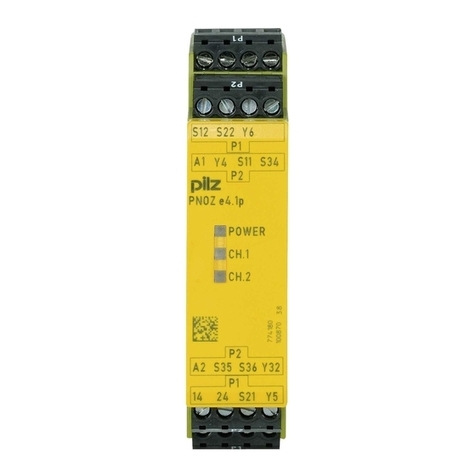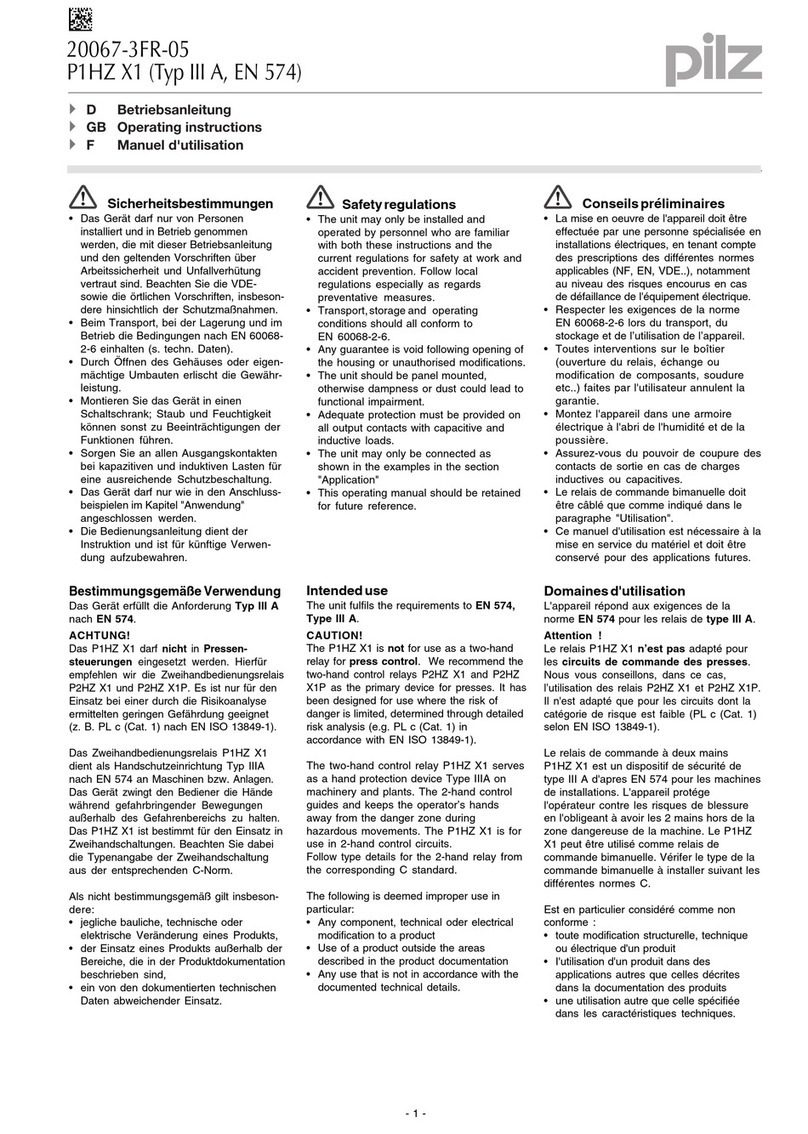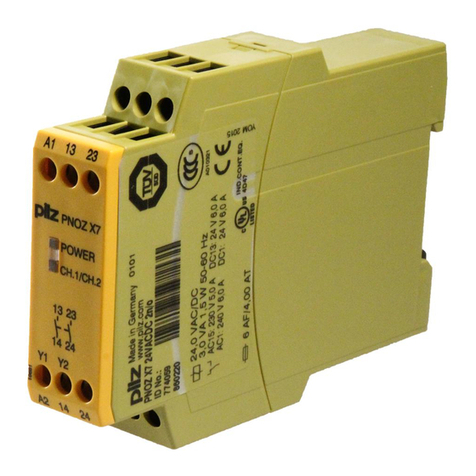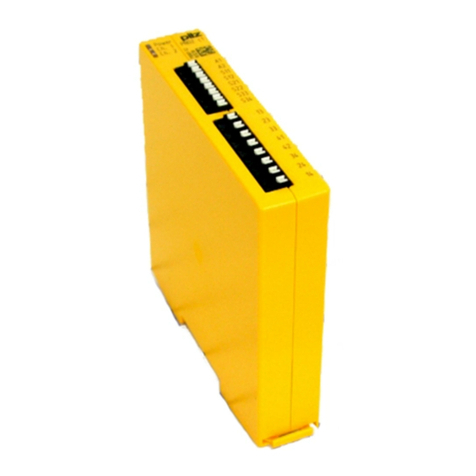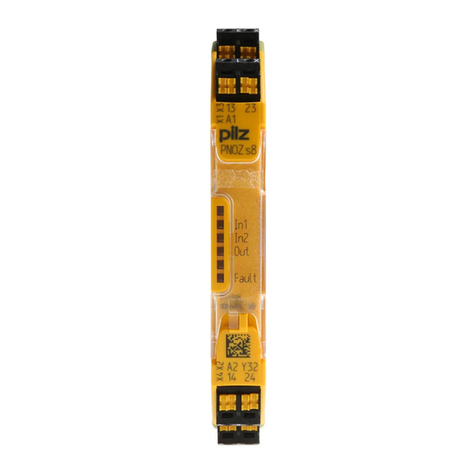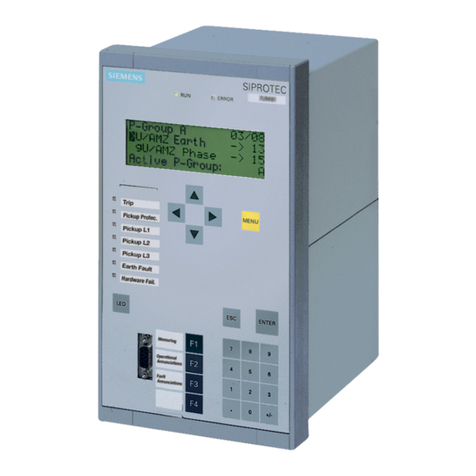
PNOZ c2
Operating Manual PNOZ c2
22212-EN-04 8
Function description
When the supply voltage is supplied, the "POWER" LED illuminates. The unit is ready for
operation when the start circuit is closed or a start contact in the start circuit is opened and
then closed again.
}High signal at the input circuit (e.g. light guard not interrupted): The safety contacts are
closed and the auxiliary contact is enabled.
}Low signal at the input circuit (e.g. light guard interrupted): The safety contacts are
open and the auxiliary contact is disabled.
}Dual-channel operation without detection of shorts across contacts: Redundant input
circuit, detects earth faults in the start and input circuit .
}Automatic start: Unit is active as soon as a high signal is present at the input circuit.
}Monitored start: Unit is active when there is a high signal at the input circuit is closed
and then the start circuit is closed.
}Increase in the number of available contacts by connecting contact expander modules
or external contactors/relays.
Installation
}The unit should be installed in a control cabinet with a protection type of at least IP54.
}Use the notch on the rear of the unit to attach it to a DIN rail.
}Ensure the unit is mounted securely on a vertical DIN rail (35 mm) by using a fixing ele-
ment (e.g. retaining bracket or an end angle).
Wiring
Please note:
}Information given in the "Technical details" must be followed.
}Outputs 13-14 and 23-24 are safety contacts, the semiconductor output Y32 is an auxil-
iary output (e.g. for display).
}Semiconductor output Y32 should not be used for safety circuits!
}To prevent contact welding, a fuse should be connected before the output contacts (see
Technical details).
}Use copper wire that can withstand 60/75°C.
}Do not connect capacitive load.
}Do not switch low currents using contacts that have been used previously with high cur-
rents.
}The power supply must comply with the regulations for extra low voltages with protect-
ive electrical separation (SELV, PELV) in accordance with VDE 0100, Part 410.
}Ensure the wiring and EMC requirements of IEC 60204-1 are met.

